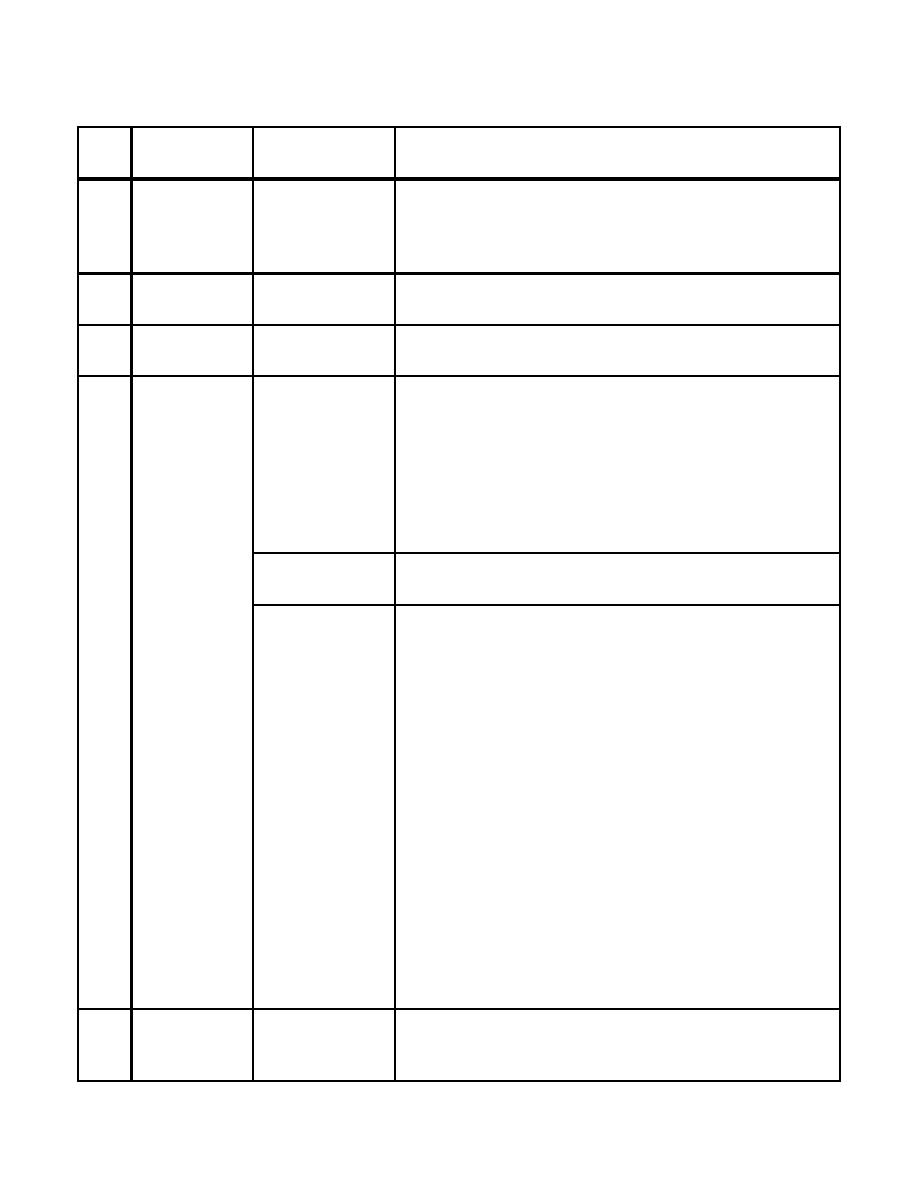
Chapter 4
Table 4.1. Rotary-Wing Runways.
Item
Item
Description
Requirement
Remarks
No.
3
Longitudinal
Max. 1.0%
Maximum longitudinal grade change is 0.167% per 30 linear
Grade
meters [100 linear feet] of runway. Exceptions: 0.4% per 30
linear meters (100 linear feet) for edge of runways at runway
intersections.
4
Transverse
Min. 1.0%
From centerline of runway.
Grade
Max. 1.5%
Runway may be crowned or uncrowned.
5
Paved
See Table 4.4.
Shoulders
45.72 m
VFR operations.
6
Runway
[150 ft]
Lateral
Clearance
Zone
(corresponds to
half the width
of primary
surface area)
IFR operations.
114.30 m
[375 ft]
Measured perpendicularly from centerline of runway. This
See Remarks
area is to be clear of fixed and mobile obstacles. In addition
to the lateral clearance criterion, the vertical height
restriction on structures and parked aircraft as a result of the
transitional slope must be taken into account.
(1) Fixed obstacles include manmade or natural features
constituting possible hazards to moving aircraft.
Navigational aids and meteorological equipment are possible
exceptions. For Army and Air Force, siting exceptions for
navigational aids and meteorological facilities are found in
Attachment 14 of this manual. For Navy and Marine Corps,
siting exceptions for navigational aids and meteorological
facilities are found in NAVFAC P-80.3.
(2) Mobile obstacles include parked aircraft, parked and
moving vehicles, railroad cars and similar equipment.
(3) Taxiing aircraft are exempt from this restriction.
However, parallel taxiways (exclusive of shoulder width)
must be located in excess of the lateral clearance distance.
Max. 5.0%
Exclusive of pavement and shoulders. For Air Force
7
Grades Within
installations, a minimum of 2.0 percent before
the Primary
channelization.
Surface Area
4-2


 Previous Page
Previous Page
